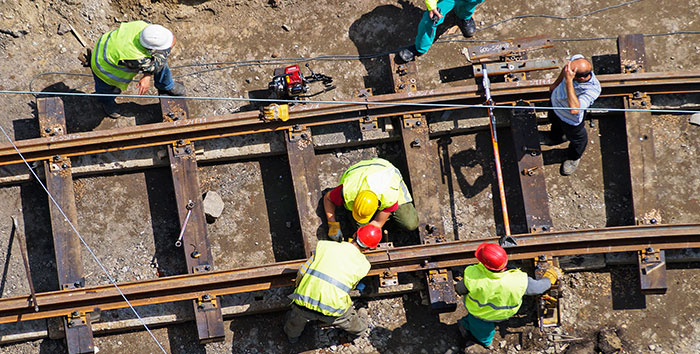The foundations of successful collaboration are simple and essential. First, the project must have a clear vision, the end benefit it will deliver to the people who work/use the infrastructure asset and the benefits it will contribute to the local community and wider economy. The internal part of the vision is to identify key values by which everyone will work. This is where the second key element, leadership, comes in. The leader and immediate team must define and agree key principles such as honesty, integrity, reliability by which everyone will work. The leadership team should now demonstrate their knowledge and commitment to working collaboratively by teaming up to develop a clear definition of the project requirement so that everyone can work to the same overall brief. This moves naturally into the third aspect – behavior – through identifying that courtesy, openness and prompt communication are all important. It is here that the leadership team sets an example which can be extended into a partnership culture that is supported by behaviour, i.e. what you do, how you communicate, respecting each party and treating other people how you want to be treated. Last, and not least, is having common processes and tools across the entire project to facilitate easy communication and help remove barriers and excuses for not collaborating.
Critical success factors
There are a number of actions that can be used to help ensure that everyone on the extended team is working towards the same outcome.
- agreeing objectives up-front that are SMART
- simple, measurable, affordable, realistic, timetable
- design in detail
- ensure that detailed design is undertaken early on so that opportunities to improve efficiency and save money are identified
- ensuring suppliers can do what they say they can do
- honesty about capability and resource is vital
- pro-active engagement with suppliers throughout the life-span of the project
understand their concerns, what they can and will not do in order to protect their position.
Having knowledgeable people in the procurement team who understand the project aims and value over price. Identify when they should become involved, ideally very early on to ensure aligned commercial arrangements. Detailed risk management Identify ways to mitigate risk during the project life-cycle by obtaining a continuous measurement of performance. Agree how each supplier is going to be measured and in conjunction with the suppliers with which they need to interact.
Only as good as your suppliers
Supplier relationships make or break projects. Understand each supplier’s true capabilities, what they are good at and what they are not good at identify how best to work together and build an integrated team with well-defined common objectives that are clearly and consistently communicated. Create an environment where good ideas and innovations can be put forward without fear and concerns can be raised. Build trust by quickly addressing counter-productive attitudes such as ‘they don’t know what they are procuring so when they come to us for variations that is where we will make our money.’
